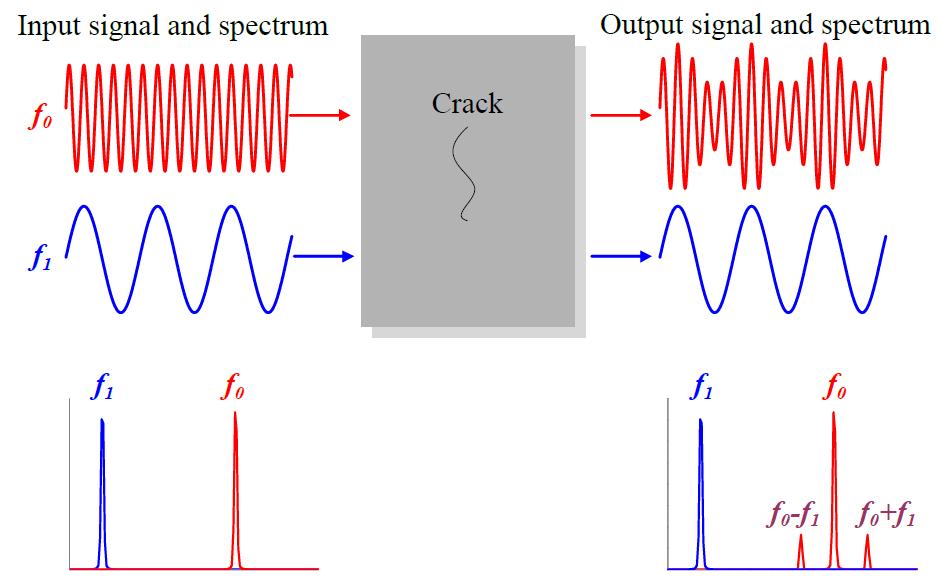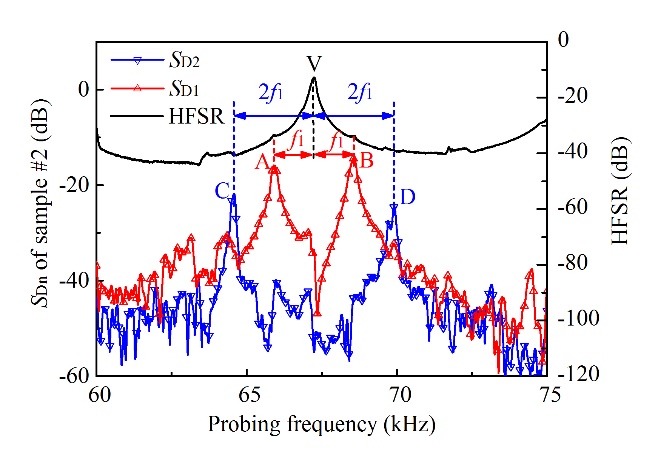As a nonlinear ultrasonic nondestructive testing method, VAM (Vibro-acoustic modulation) uses low-frequency vibrations to stimulate a structure and an ultrasonic wave, which is modulated by vibration if the system is damaged, to detect the structure. This technique is sensitive to contact-type defects while does not require any sophisticated equipment to excite and receive the signals.
However, little research has been done on the effect of the crack position and pumping excitation on the modulation distribution along the probing frequency. In addition, the optimum probing frequency selection method has not yet been determined.
Researchers from the Institute of Acoustics of the Chinese Academy of Sciences (IACAS) found that the VAM technique exhibited the best crack sensitivity when the probing frequency was selected as the sum or difference of the resonance and pumping frequency. To lock this optimum probing frequency, the minimum sweep range should be at least twice the beam longitudinal fundamental frequency.
The research was published online in Mechanical Systems and Signal Processing on March 29, 2020.
Researchers investigated in the interactions between the ultrasound, vibration, and crack. The results demonstrated that the modulation could be affected by the crack position. When the crack is located at the longitudinal resonance node point x0 = L m/n (where L is the beam length, n is the mode number, m is an integer, and 1 < m < n), both the modulation at the multiples of the number n-order resonance frequencies and peaks on the side of these resonances are much lower. The modulation peak values occur on both sides of the high-frequency structure response resonances, and the interval frequency between the peak and corresponding resonance is equal to the low vibration (pumping) frequency.
Further analysis suggested that the nonlinear spring model was appropriate for crack simulations to predict modulation distribution and select parameters. All of the obtained results would aid in understanding the modulation mechanism and making further improvements to the reliability and efficiency of the VAM technique.
This work was supported by the National Natural Science Foundation of China (No. 51805528).

Figure 1. Principle of VAM. (Image by IACAS)

Figure 2. Comparison of the influence to the modulation distribution generated by different crack positions (MID values calculated with modulation theory. MISD values measured with VAM test). (Image by IACAS)

Figure 3. The relationship between modulation distribution and pumping frequency. (Image by IACAS)
Reference:
LIU Bin, YANG Jun, GANG Tie. Analysis of sound and vibration interaction on a crack and its use in high-frequency parameter selection for vibro-acoustic modulation testing. Mechanical Systems and Signal Processing, 2020, 143: 106835. DOI: 10.1016/j.ymssp.2020.106835
Contact:
ZHOU Wenjia
Institute of Acoustics, Chinese Academy of Sciences, 100190 Beijing, China
E-mail: media@mail.ioa.ac.cn


